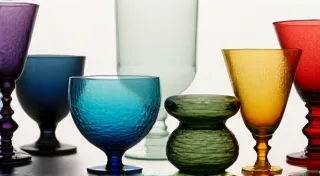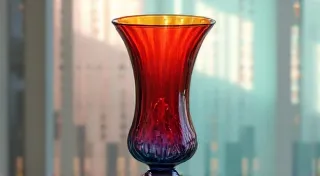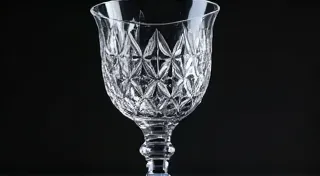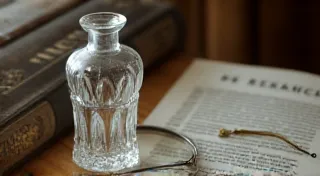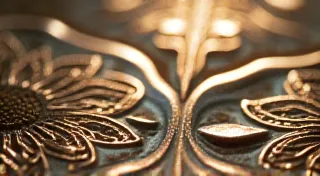Cut Glass vs. Pressed Glass: Understanding the Differences
Identifying antique glassware can be a rewarding hobby, but it's often challenging! One of the most common hurdles for beginners is understanding the difference between cut glass and pressed glass. While both are beautiful and sought-after collectibles, their creation methods and resulting aesthetics are significantly different. This article will break down the key distinctions, making glass identification a little easier. Beyond simply identifying the type of glass, understanding its history and potential value can be a truly enriching experience. Many collectors become fascinated by specific patterns or manufacturers, like those explored in Identifying Fenton Glass Patterns, leading them on a lifelong journey of discovery.
What is Pressed Glass?
Pressed glass, as the name suggests, is created by forcing molten glass into a mold. These molds were often intricately designed, allowing for complex patterns to be imprinted onto the glass surface. The process was relatively inexpensive and quick, leading to the mass production of pressed glass during the 19th and early 20th centuries. This made pressed glass accessible to a wider range of people. The ability to reproduce intricate designs quickly and efficiently truly democratized beautiful glassware. Look for consistent repeating patterns. Any imperfections or slight variations in the pattern are usually a sign of pressed glass. The consistency is a key indicator; the process aims for uniformity. Understanding this production method helps appreciate the differences when compared to the skilled artistry of cut glass.
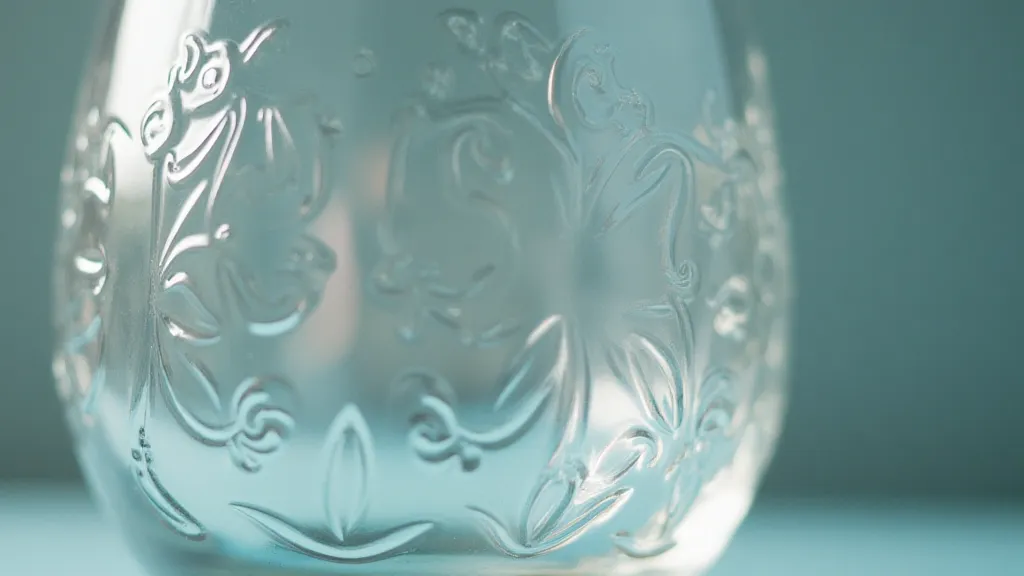
Popular pressed glass colors include amberina, cranberry, and custard. The designs range from simple geometric shapes to elaborate floral motifs and scenes. While pressed glass offers a wide variety of designs, collectors often specialize. Some delve into particular patterns or manufacturers, seeking out rare variations and unique color combinations. This often leads them to explore the world of specific manufacturers and their distinctive approaches. The study of these patterns can become quite specialized, much like the dedicated pursuit outlined in Identifying Rose Pattern Glassware, which provides a detailed look at the nuances of a beloved design.
What is Cut Glass?
Cut glass, in stark contrast to pressed glass, is created through a meticulous hand-cutting process. After the glass is formed into its basic shape (usually blown), skilled artisans use specialized tools to carefully cut intricate designs into the surface. These cuts can be facets, geometric patterns, or elaborate floral and scrollwork. The process is labor-intensive, which is why cut glass tends to be more valuable than pressed glass. The dedication and skill required to produce cut glass are a testament to the value placed on artistry and craftsmanship in earlier eras.
The quality of cut glass is judged by the precision and artistry of the cuts, the sharpness of the facets, and the overall elegance of the design. Look for a brilliant sparkle – the hallmark of well-cut glass. The more cuts, the more light reflects, creating that distinctive brilliance. This painstaking process wasn't just about aesthetics; the sparkle and refraction of light were seen as symbols of luxury and refinement.
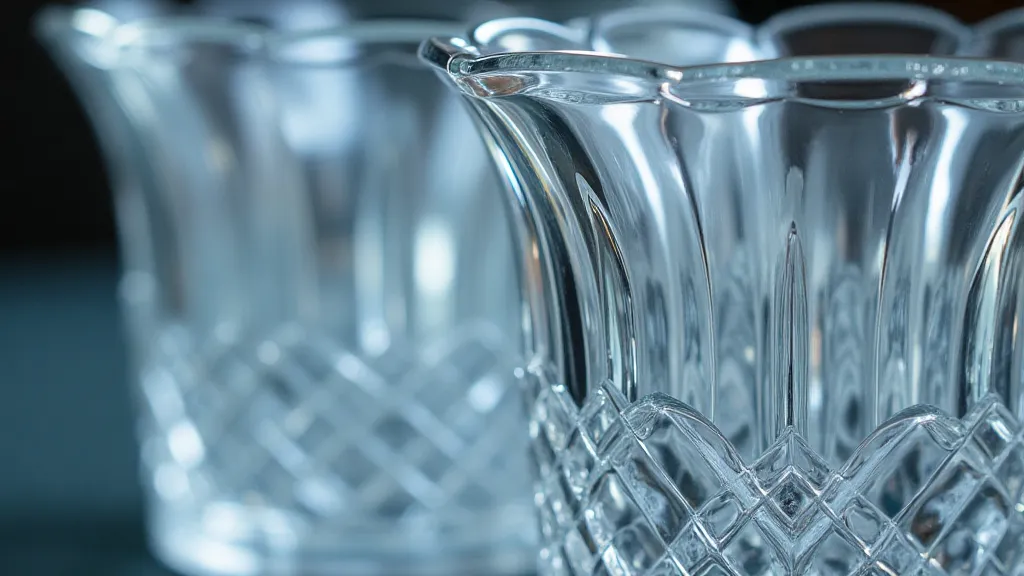
Key Differences Summarized
Here's a quick comparison table to solidify the distinctions:
- Manufacturing Process: Pressed glass is molded; Cut glass is hand-cut.
- Cost: Pressed glass is typically less expensive; Cut glass is more expensive.
- Labor Involved: Pressed glass requires less labor; Cut glass requires significant artisan skill.
- Appearance: Pressed glass often has a more uniform, “stamped” look; Cut glass has a unique, handcrafted feel and a brilliant sparkle.
- Value: Cut glass usually commands higher values in the antique market.
Identifying Which You Have
When trying to identify your glassware, consider these points:
- Feel the surface: Pressed glass will feel relatively smooth. Cut glass will have noticeable cuts and facets.
- Look for repeating patterns: Pressed glass will have consistent repeating patterns.
- Inspect for flaws: While both types of glass can have imperfections, pressed glass is more likely to have visible mold lines or slight variations in the pattern. These imperfections, while unwanted in the manufacturing process, can sometimes provide clues about the era and style of the piece.
- Consider the price point: While not foolproof, the price in antique shops or online marketplaces can offer clues. It's essential to remember that pricing depends on many factors, including rarity, condition, and demand.
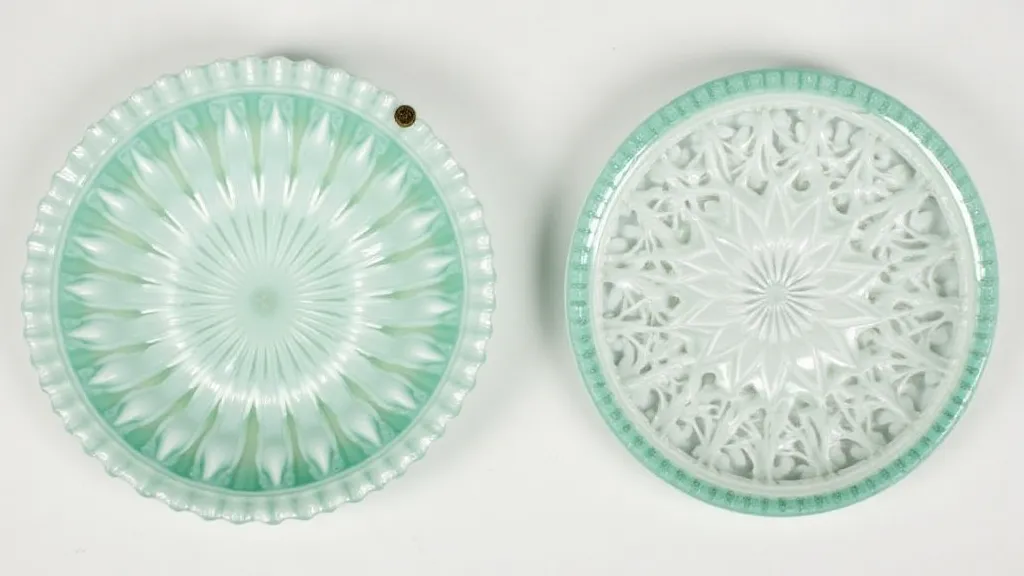
A Deeper Dive: Historical Context and Manufacturing Techniques
The rise of pressed glass in the mid-19th century coincided with the Industrial Revolution. The ability to mass-produce decorative items transformed the availability of beautiful objects, making them accessible to a broader segment of the population. This was a significant departure from earlier periods when handcrafted items were primarily the domain of the wealthy. The technology for pressed glass manufacturing constantly evolved, resulting in increasingly intricate designs and more efficient production methods. Understanding the historical context provides valuable insights into the evolution of glassmaking techniques and the cultural significance of these objects.
Cut glass, on the other hand, represents a tradition rooted in artistry and craftsmanship. The techniques for cutting glass have been refined over centuries, with each generation of artisans building upon the knowledge and skills of their predecessors. The tools used in cut glass production were often specialized and expensive, requiring significant investment and expertise. The process of hand-cutting glass is physically demanding and requires exceptional dexterity and precision. The resulting pieces are not just beautiful objects; they are tangible expressions of human skill and artistry.
Beyond Identification: Collecting and Preservation
Once you’re comfortable distinguishing between pressed and cut glass, your journey into the world of antique glassware has just begun. Collecting can be a truly rewarding hobby, offering opportunities to learn about history, art, and design. Researching markings, patterns, and manufacturers can deepen your appreciation for these objects and reveal fascinating stories about their origins. Many collectors specialize in specific patterns or manufacturers, developing a deep understanding of their history and evolution. The study of factory markings, for example, can be a complex and rewarding challenge. The evolution of Cambridge Glass, explored in detail in The History of Cambridge Glass, exemplifies the rich heritage and distinct characteristics of a renowned American glasshouse.
Preserving antique glassware requires careful handling and storage. Avoid sudden temperature changes, direct sunlight, and abrasive cleaners. Displaying your collection properly can enhance its beauty and protect it from damage. Regular cleaning with a soft cloth and mild soap can help maintain its luster and prevent the buildup of dust and grime. Proper care ensures that these treasured objects can be enjoyed for generations to come.
The Intriguing Link Between Glassware and Family History
Antique glassware often serves as a tangible link to the past, providing glimpses into the lives of previous generations. The patterns and styles of glassware often reflect the tastes and trends of their time, offering clues about the social and cultural context in which they were used. For some, the patterns and designs evoke specific memories or family traditions. Piecing together the stories behind these objects can be a deeply personal and meaningful experience. The markings on glass, often overlooked, can hold valuable information about the manufacturer, date, and sometimes even the location where the piece was made. This detective work can uncover fascinating details about your family's history and connections to the broader world. Sometimes, seemingly insignificant fragments of glass can unlock a family’s narrative, much like the tracing of familial connections through markings, as detailed in Fractured Constellations: Tracing Family Histories Through Glassware Markings.
Further Exploration
Understanding the differences between cut glass and pressed glass is a crucial first step in the fascinating world of antique glassware. Keep exploring, researching markings, and learning about different patterns – your collection awaits!
